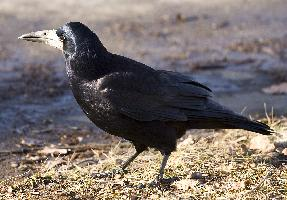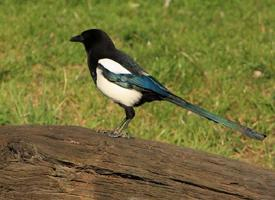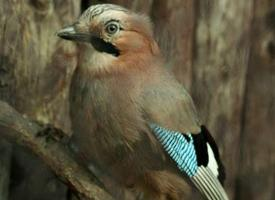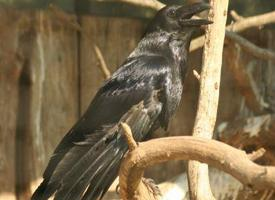
Poids et mesures
| Longueur | de 45 à 47 cm |
|---|---|
| Poids | de 200 à 625 g |
| Envergure des ailes | de 81 à 94 cm |
Description de l'animal
The Rook (Corvus frugilegus) is a prominent member of the corvid family, a group known for their intelligence and adaptability. This bird species is distinguished by its striking appearance and complex social behavior, making it a subject of fascination among birdwatchers and researchers alike.Physically, the Rook is a large bird, comparable in size to other members of the crow family, with adults typically measuring around 45-47 cm in length and weighing approximately 300-400 grams. The plumage of the Rook is predominantly black, exhibiting a purplish or bluish sheen in sunlight, which adds to its enigmatic presence. One of the most distinctive features of the Rook is its bare, greyish-white face, throat, and bill base, which contrasts starkly with its dark feathers. This feature becomes more pronounced with age and is a key characteristic that helps differentiate it from other similar corvids.
The Rook's bill is strong and slightly curved, adapted for its omnivorous diet. It primarily feeds on invertebrates, such as earthworms and insect larvae, but its diet is notably varied and can also include small rodents, grain, fruits, and even food waste from human sources. This dietary flexibility has allowed Rooks to thrive in a wide range of habitats, although they show a preference for agricultural landscapes and grasslands, where foraging is most productive.
One of the most remarkable aspects of the Rook is its social structure. Rooks are highly sociable birds, known for forming large, communal roosts that can contain thousands of individuals. These gatherings are not only a spectacle to observe but also serve as a testament to the Rook's complex social interactions and communication skills. During the breeding season, Rooks exhibit a more territorial behavior, with pairs nesting in close proximity to each other in what are known as rookeries. These rookeries, often located in the tops of tall trees, can contain dozens to hundreds of nests, creating a bustling community.
The nests themselves are substantial structures, built primarily from twigs and lined with softer materials such as moss, grass, and feathers. Both the male and female participate in nest construction and the care of their young, showcasing a cooperative breeding strategy that is essential for their survival and success as a species.
Rooks are also known for their remarkable intelligence. They are capable of using tools, solving complex problems, and even recognizing human faces, which places them among the most intelligent of bird species. This cognitive ability, combined with their adaptability, has allowed Rooks to navigate the challenges of changing landscapes and human encroachment on their natural habitats.
Despite facing threats such as habitat loss and agricultural intensification, the Rook has managed to maintain relatively stable populations in many parts of its range, which extends across much of Europe and into parts of Asia. Their resilience and adaptability, along with their intriguing social dynamics and intelligence, make the Rook a fascinating subject of study and an enduring presence in the ecosystems they inhabit.
Animaux similaires
Nouvelles photos d'animaux
Top 10 des animaux
- Dolphin gull (Leucophaeus scoresbii)
- Japanese macaque (Macaca fuscata)
- Stone loach (Barbatula barbatula)
- Greek tortoise (Testudo graeca)
- Russian tortoise (Testudo horsfieldii)
- Galápagos tortoise (Geochelone nigra complex)
- Diana monkey (Cercopithecus diana)
- Moustached guenon (Cercopithecus cephus)
- Common flying dragon (Draco volans)
- Galápagos penguin (Spheniscus mendiculus)


